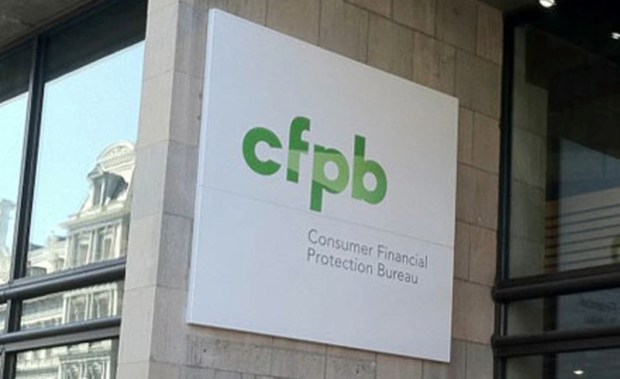The CFPB’s Fact Finding Into SMB Lending (And Why Bankers Are Worried)

After seven years of offering close scrutiny to any and all aspects of consumer lending — mortgage underwriting, car loans, short-term lending, credit cards, debt collection, pre-paid cards, arbitration — as of this month, the Consumer Finance Protection Bureau is broadening its horizons into small business lending (SMB) in the United States.
Citing the extraordinary importance the SMB sector has to the U.S. economy as a whole — and the relative lack of transparency when it comes to underwriting information about that sector — the CFPB announced in early May that it is launching an inquiry into the financing needs of SMBs in the U.S.
Of specific interest to the consumer watchdog: how lenders identify, define and quantify small businesses — and how those evaluations tie into the review process for underwriting. The CFPB will also take a closer look at the types of information and paperwork requirements SMBs face during the application process, and what they the most typical sources for SMB credit are.
“Small businesses fuel America’s economic engine, create jobs and nurture communities. Yet little is known about how well the lending market serves their financing needs,” CFPB Director Richard Cordray noted. “This inquiry will help us learn how we can best fulfill our duty to collect and report information on small business lending.”
The pivot into SMB lending has long been considered “inevitable” by some. As part of its mandate in aiding the creation and enforcement of fair lending laws, the the bureau is empowered by Dodd-Frank to collect and report data on credit sought by small businesses, minority-owned businesses and women-owned businesses. Dodd-Frank further directs lenders of all sizes to compile 13 data points on each SMB loan. That data includes how much the loan is for, what it is for, where it was made and what the applicant business’ most recent revenue amount was recorded as.
Dodd-Frank also gives the CFPB broad power to “specify any additional data that the Bureau determines would aid in fulfilling the purposes” of the law.
Small business underwriting data has been historically sparse, and lack of transparency into underwriting has been a long complaint of small merchants navigating the often tricky world of securing financing.
But the CFPB’s uptick in interest in the segment has raised some consternation, particularly among underwriters, that the actual outcome of this inquiry will be an even bigger slowdown in funds flowing to small businesses, as lenders and merchants are hit with more complicated reporting requirements.
The “CFPB has actually expanded that to 110 different data points that lenders need to collect on every mortgage loan,” the Independent Community Bankers of America’s (ICBA) Assistant Vice President and regulatory counsel, Joe Gormley, noted, adding that a host of additional data points for SMB lenders, according to the ICBA, will “compound existing regulatory and paperwork burdens, to the detriment of economic and job growth.”
The Collection Burden
Banks — as the result of new regulations — only began reporting the size of small-business portfolios in 2010 with any regularity. As of now, the CFPB is looking for guidance from the public about how lenders define a small business, how they collect information from prospective borrowers now and the challenges they anticipate in having to collect the data required by Dodd-Frank.
As public comments are opening — and bankers are commenting — the overwhelming concern is that the data the CFPB is looking for might be much harder to collect than they are anticipating, because categorizing loans is a bit more complex than one might think. Many of the publicly available comments noted that the current operating definition of an SMB loan manages to lock out a lot of things that sound like they should be categorized SMB loans — and also include many things that don’t seem like they should be.
Kent Franzen, a self-defined veteran banker, noted in his comment to the CFPB that categorization of loans is far from intuitive for those outside of banking.
“For every bank I have worked in, it is purely a loan purpose test,” he wrote. “Is the purpose of the loan to generate or support the production of income? If the answer is yes, it is a small business loan; answer no, and it is a consumer purpose loan … I fear that the heavy hand of the CFPB will force standardization and regimentation upon the small business community bank relationship at the expense of borrowers, lenders and society as a whole.”
The ICBA echoes this concern, noting that it is worrisome to begin a data collection process on SMB lending when they “don’t know how to define what a small business loan is.”
“And unlike mortgage lending, where there’s a very discrete set of products, every small business loan is unique.”
So, the concern goes, the CFPB is going to try to mandate and regimen data collection for a set of products before they’ve actually fully defined that set of products. And, the ICBA’s Gormley noted, the concern runs deeper than the burden of data collection.
Not All Banks Are the Same
In banking, size matters — a lot. And this is particularly true when it comes to looking for violations of anti-discrimination laws that are searching out “disparate impact.”
Disparate impact refers to policies and actions undertaken that are formally neutral when it comes to evaluating applicants — but that consistently affect certain classes of people differently. The problem, Gormley noted, is small banks carry very few commercial loans in their overall portfolio, which means there is just not enough data to derive a pattern. Aggregating the data across a class of banks can moderate that issue but not solve it, because how the aggregation is done comes very much effect and outcome.
“Would it be nice to have all the banks to provide all this information? Yes. But there has to be a trade off. Unless you think there’s something peculiar about these tiny banks, that they’re going to behave differently from bigger banks, then there’s not a whole lot to be gained by burdening them with this obligation,” noted Rebel Cole, a professor at Florida Atlantic University, who studies small business lending,
There is, however, a something to be lost, according to experts, as small and midsize banks pull out of SMB lending entirely to avoid the profit-killing reporting, resulting in less available SMB access to credit. Or, there is always the possibility that yet another set of expensive regulations continues to push the rate of small bank failures, which is already creeping up in 2017.
Cole, for his part, would like to see more data gathered but thinks regulations need to exclude the smallest banks (those with under $1 billion in assets).
That entire class of banks, incidentally, collectively comprises less than 8 percent of the industry’s total assets.
For the time being, both sides can still log in their opinions. Public comment is open until July 14, and comments can be submitted here.
